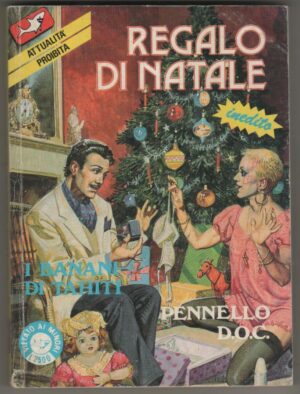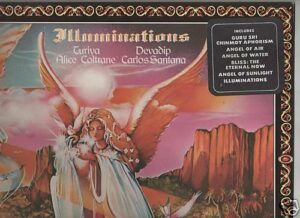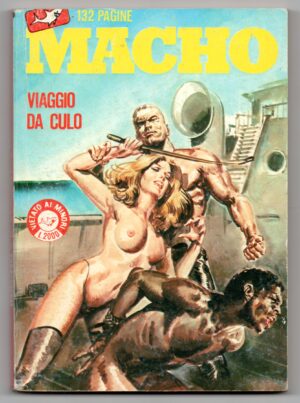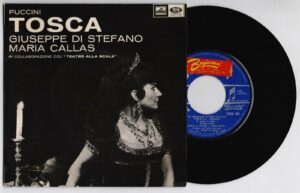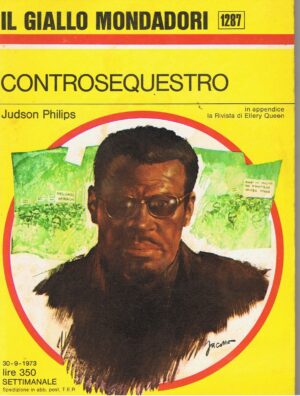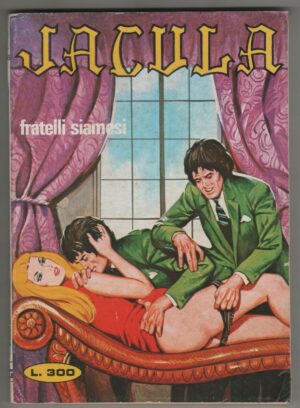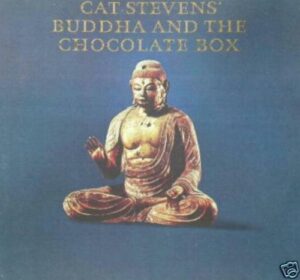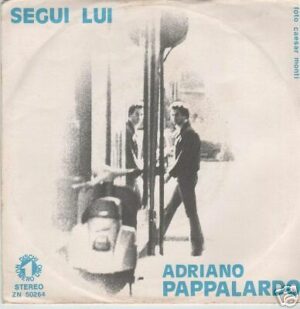Description
PREMESSA: LA SUPERIORITA’ DELLA MUSICA SU VINILE E’ ANCOR OGGI SANCITA, NOTORIA ED EVIDENTE. NON TANTO DA UN PUNTO DI VISTA DI RESA, QUALITA’ E PULIZIA DEL SUONO, TANTOMENO DA QUELLO DEL RIMPIANTO RETROSPETTIVO E NOSTALGICO , MA SOPRATTUTTO DA QUELLO PIU’ PALPABILE ED INOPPUGNABILE DELL’ ESSENZA, DELL’ ANIMA E DELLA SUBLIMAZIONE CREATIVA. IL DISCO IN VINILE HA PULSAZIONE ARTISTICA, PASSIONE ARMONICA E SPLENDORE GRAFICO , E’ PIACEVOLE DA OSSERVARE E DA TENERE IN MANO, RISPLENDE, PROFUMA E VIBRA DI VITA, DI EMOZIONE E DI SENSIBILITA’. E’ TUTTO QUELLO CHE NON E’ E NON POTRA’ MAI ESSERE IL CD, CHE AL CONTRARIO E’ SOLO UN OGGETTO MERAMENTE COMMERCIALE, POVERO, ARIDO, CINICO, STERILE ED ORWELLIANO, UNA DEGENERAZIONE INDUSTRIALE SCHIZOFRENICA E NECROFILA, LA DESOLANTE SOLUZIONE FINALE DELL’ AVIDITA’ DEL MERCATO E DELL’ ARROGANZA DEI DISCOGRAFICI .
ROBERT MARGOULEFF and MALCOLM CECIL
tonto’ s expanding head band
( ZERO TIME )
Disco LP 33 giri , 1975, Reissue with different cover of “ZERO TIME” (embryo records 1971) , Atlantic , SD 18123 , USA
ECCELLENTI CONDIZIONI, vinyl M , cover ex++/NM
Tonto’s Expanding Head Band was an electronic music duo consisting of Malcolm Cecil and Robert Margouleff.
Despite releasing only two albums in the early 1970s, the duo were (and
still remain) hugely influential because of their voluminous session
work for other musicians (most notably Stevie Wonder), extensive commercial advertising work and the unique warmth and personality of their work.
Robert Margouleff e Malcom Cecil, ovvero la Tonto’s Expanding Head
Band, furono il primo duo a realizzare un album interamente suonato con il
sintetizzatore:
Zero Time (Embryo, 1971).
Cecil,
contrabbassista inglese attivo fin dagli anni ’50, aveva costruito con le proprie mani lo strumento
polifonico che usarono.
Versione melodica del dadaismo di Subotnick e versione “alta” della tarda
psichedelia astratta, la loro musica è lirica e immediata: si va dalle carovane orientali di
Cybernaut (degna di un kolossal biblico) alle dissonanze occulte di Jetsex (degna del rock
pneumatico dei Neu), dall’esuberante melodia in crescendo di Timewhys (che popolarizza il
minimalismo di Riley) al descrittivismo “concreto” di Aurora (secreto da mantra tibetani), dal
raga di Riversong alla malinconica, nostalgica aria di Tama, cullata dalle onde e dal
vento.
E’ un disco che anticipa diversi generi da venire del pop elettronico, e che
costituisce una prima saldatura, per quanto naif, fra lo spiritualismo dei Sixties e il tecnologismo degli
Eighties. L’umiltà e il gusto con cui semplici figure melodiche e ritmiche dei Moog vengono
intrecciate in armonie di grande presa emotiva resteranno esemplari per generazioni e generazioni di
musicisti new age.
I due verranno poi assunti da Stevie Wonder per arrangiare i suoi capolavori soul.
Tonto is the name of the enormous synthesizer invented by Malcolm Cecil
(Tonto’s Expanding Head Band founder). T.O.N.T.O. stands for The
Original and New Timbral Orchestra due to its amazingly expansive
symphonic sound.
- Etichetta: Atlantic
- Catalogo: SD 18123
- Matrici: ST-A-743283 A RJMMC ZEROTIME PR KENDUN A / ST-A-743283 A PEACE, LOVE, JOY SIGNED : BOB * MALCOLM PR THE ONLY WAY OUT OF A CIRCLE IS THROUGH THE CENTER – TAMA KENDUN B
- Data di pubblicazione: 1975
- Supporto:vinile 33 giri
- Tipo audio: stereo
- Dimensioni: 30 cm.
- Facciate: 2
- original atlantic inner sleeve with rock catalogue
The TONTO synthesizer
TONTO is an acronym for “The Original New Timbral Orchestra,” the
world’s first (and still the largest) multitimbral polyphonic analog synthesizer, designed and constructed by Malcolm Cecil. TONTO started as a Moog modular synthesizer Series III owned by record producer Margouleff. Later a second Moog III was added, then four Oberheim SEMs, two ARP 2600s, modules from Serge with Moog-like panels, EMS, Roland, Yamaha, etc. plus several custom modules designed by Serge Tcherepnin and Cecil (who has an electrical engineering background).
Later, digital sound-generation circuitry and a collection of
sequencers were added, along with MIDI control. The modules are all
mounted in an instantly-recognizable semi-circle of huge curving wooden
cabinets, twenty feet in diameter and six feet high.
What possessed him to assemble such a monstrous system?
- “I wanted to create an instrument that would be the first
multitimbral polyphonic synthesizer. Multitimbral polyphony is
different than the type of polyphony provided by most of today’s
synthesizers, on which you turn to a string patch and everything under
your fingers is strings. In my book ‘multitimbral’ means each note you
play has a different tone quality, as if the notes come from separate
instruments. I wanted to be able to play live multitimbral polyphonic
music using as many fingers and feet as I had.”
TONTO has been solely owned by Malcolm Cecil since he acquired
Robert Margouleff’s share in 1975. In the mid-1990s TONTO was moved to Mutato Muzika studios, the headquarters of Mark Mothersbaugh and Devo,
leading to widespread rumors that Mark had purchased TONTO but this was
not true. Currently TONTO is located in its own studio in upstate New
York close to Woodstock.
…if you want to see the
size of synthesizers in the early seventies – they looked more like ancient
telephone exchanges than musical instruments. The album is all instrumental
– apart from something that may have started off as a voice, but I couldn’t
be certain about that. The sound is the fattest synthesizer you will ever
hear – turn up the volume, lie back and close your eyes while the floor
vibrates and you go on a wonderful musical trip..
Track listing
Side one
- Cybernaut (Robert Margouleff, Malcolm Cecil) 04:30
- Jetsex (Robert Margouleff, Malcolm Cecil) 04:14
- Timewhys (Robert Margouleff, Malcolm Cecil) 04:57
Side two
- Aurora (Robert Margouleff, Malcolm Cecil) 06:48
- Riversong (Robert Margouleff, Malcolm Cecil) 08:00
- Tama (Robert Margouleff, Malcolm Cecil) 05:23
| Credits: | Artwork By [Cover Illustration] –
Jeffrey Schrier
Artwork By [Design & Art Direction] – Paul Bisacca
Executive Producer – Herbie Mann
Mastered By –
Producer, Programmed By, Performer, Engineer, Synthesizer [Expanded Series 3 Moog], Written-by –
Vocals [Lyrics Sung By] – |
| Notes: | All the selections published by Village Green/Herbie Mann, ASCAP.
Recorded at Mediasound Studios, New York. Mastered at Kendun, Burbank, California Produced for Centaur Music Productions This album was originally released on Embryo Records with catalog number SD 732 as ” Tonto’s Expanding Head Band: Zero Time.” |
Zero Time is one of the first — and perhaps best of — all electronic albums. Robert Margouleff and Malcolm Cecil,
under the alias of T.O.N.T.O.’s Expanding Head Band, created this
analog marvel on T.O.N.T.O. — “The Original New Timbral Orchestra.”
The pristine synth washes are crisp and clear. Margouleff and Cecil forged a new sound with a digital feeling. Oddly, this instrument was embraced and used extensively by Motown artists. Steve Hillage used it on Motivation Radio, and Devo used it quite often. (Cecil
produced and engineered a number of their albums.) The rest of the rock
& roll community ignored it. For historical purposes, this rare and
collectible album is essential. For musical integrity, it still stands
the test of time and is essential. It is a classic with no real peers,
but it will appeal to fans of Mother Mallard’s Portable Masterpiece Company, Jean Michel Jarre, Tangerine Dream, Wendy Carlos, and Fripp & Eno in terms of its uniqueness and legacy.
TONTO’s influence
Tonto’s Expanding Head Band’s first album, Zero Time, was released in 1971 on the U.S. Embryo label (distributed by Atlantic Records) and attracted a lot of attention for its unique, warm, musical sounds. Stevie Wonder in particular was impressed enough to subsequently feature TONTO in his albums starting with Music of My Mind and continuing through Talking Book, Innervisions, Fulfillingness’ First Finale and Jungle Fever;
all projects which listed Margouleff and Cecil as associate producers,
engineers and programmers (and winning them an engineering Grammy for Talking Book). Writing in Keyboard Magazine in 1984, John Diliberto asserted that:
- “… this collaboration changed the perspectives of black pop music as much as The Beatles‘ Sgt. Pepper altered the concept of white rock”.
Indeed, the remainder of the 70s and 80s saw TONTO featured on albums from Quincy Jones, Bobby Womack, The Isley Brothers, Gil Scott-Heron and Weather Report, as well as releases from Stephen Stills, The Doobie Brothers, Dave Mason, Little Feat and Joan Baez, Steve Hillage, and others. The TONTO synthesizer was also used in Brian De Palma‘s 1974 movie “Phantom of the Paradise“.
A second TONTO album, It’s About Time was released in 1972.
In 1996 a CD
“Tonto Rides Again” was released, which features all of the original
tracks from “Zero Time” plus the tracks from “It’s About Time” (which
have been mysteriously re-titled, apparently for legal reasons). In the
liner notes to the re-release, Mark Mothersbaugh wrote:
- “Once upon a time, Tonto represented the cutting edge of artificial
intelligence in the world of music – Robert and Malcolm are the mad
chefs of aural cuisine with beefy tones and cheesy timbres, making
brain chili for those brave enough and hungry enough. Consequently,
back in the cultural wasteland of the Midwest, the release of Tonto’s
Expanding Head Band was an inspirational indicator for starving
Spudboys who had grown tired of the soup du jour. It was official –
noise was now Muzak, and Muzak was now noise. So with Tonto “riding
again” and the orb-of-sound resurrected, expect a healing. The masses
are asses who need Tonto’s glasses. Lookout, here comes Tonto!”
Also, Stevie Wonder said:
- “How great it is at a time when technology and the science of music
is at its highest point of evolution, to have the reintroduction of two
of the most prominent forefathers in this music be heard again. It can
be said of this work that it parallels with good wine. As it ages it
only gets better with time. A toast to greatness… a toast to Zero
Time… forever.”
Virtual TONTO Live
Malcom Cecil and his son, DJ Moonpup, brought TONTO’s Expanding Head Band to the live arena performing at the Big Chill Festival on August 5th, 2006. The festival was a 3 day affair held at Eastnor Castle in Herefordshire, about 2 1/2 hrs drive northwest of London.
TONTO was not actually there – it’s way too big and expensive to ship
for a one hour performance – Malcolm Cecil created a “Virtual TONTO”
and played live over pre-recorded backing tracks with a specially
prepared visual show with hundreds of pictures of TONTO and Poli
Cecil’s art pieces. The performance was enthusiastically received by an
audience of over 3,000 fans.

How great it is at a time when technology and the science of music is at its highest point of
evolution, to have the reintroduction of two of the most prominent forefathers in this music be heard again.
It can be said of this work that it parallels with good wine. As it ages it only gets better with time.
A toast to greatness… a toast to Zero Time… forever.– Stevie Wonder
Synthesizers are so pervasive an element in popular music of all types today that it’s
easy to forget what a novelty they were only 25 years ago. The first and most influential recording
was from Tonto’s Expanding Head Band in 1971, titled Zero Time.
Now what and who, is TONTO, you may ask. TONTO is an acronym for The Original New Timbral Orchestra –
the world’s first (and still the largest) multitimbral polyphonic analog synthesizer. It was conceived
and built by two prominent Grammy winning musician/engineer/producer/sound designers – Malcolm Cecil
and Robert Margouleff. Zero Time became a classic when it was first released and attracted many leading
artists of that era because of the unique, warm, musical sounds it was capable of generating. Chief
among those artists was Stevie Wonder whose involvement with TONTO started with Music Of My Mind and
continued through Talking Book, Innervisions, Fulfillingness’ First Finale and Jungle Fever, all projects
which featured Margouleff and Cecil as associate producers, engineers and programmers.
Writing in Keyboard Magazine in 1984, John Dilberto asserted that “… this collaboration changed the
perspectives of black pop music as much as The Beatles’ Sgt. Pepper altered the concept of white rock”.
Indeed, the remainder of the 70’s and 80’s featured TONTO on albums from Quincy Jones, Bobby Womack, The
Isley Brothers, Gil Scott-Heron and Weather Report, as well as releases from Steve Stills, The Doobie
Brothers, Dave Mason, Little Feat and Joan Baez, among others.
Tonto Rides Again features all of the Zero Time record in addition to seven additional previously
unavailable tracks. In 1996, as in 1971, TONTO’s sounds are totally unique. Being an analog
synthesizer, it is capable of creating virtually any sound. Its warm, fat bass sounds are particularly
noteworthy and are not able to be created by the current breed of MIDI digital synthesizers and samplers.
So take a step back in time and into the future with Tonto’s Expanding Head Band. Tonto Rides
Again!

Once upon a time, Tonto represented the cutting edge of artificial intelligence in the
world of music – Robert and Malcolm are the mad chefs of aural cuisine with beefy tones and cheesy
timbres, making brain chili for those brave enough and hungry enough. Consequently, back in the
cultural wasteland of the Midwest, the release of Tonto’s Expanding Head Band was an inspirational
indicator for starving Spudboys who had grown tired of the soup du jour. It was official – noise was
now Muzak, and Muzak was now noise. So with Tonto “riding again” and the orb-of-sound resurrected,
expect a healing. The masses are asses who need Tonto’s glasses. Lookout, here comes Tonto!
– Mark Mothersbaugh (Devo)
– The Original New Timbral Orchestra
A dialog with Nicholas Kent
photos courtesy Kevin Lightner

I’m a friend of Malcolm Cecil and spent time chatting about features
on his big, mostly custom synth, T.O.N.T.O. (of TONTO’s Expanding Head
Band fame).
He
and former partner Robert Margouleff specified the features for TONTO,
which Cecil designed or helped design a number of custom modules for
(He has an electrical engineering background). Many of the custom ones
were Serge built. The synth as a whole was begun on a foundation of
a IIIC in the late 60s and they added some semi modular synths from
Arp, Oberheim, etc. for cost effectiveness later. In the early 70s it
became the first Polyphonic CV synth. Both Tom Oberheim and notoriously
Yamaha learned from and engineered around his patents.
Its
certainly worth a solid footnote in Serge history since TONTO contains
a lot of custom early Serge work. And of course the N.T.O. in TONTO
isn’t a coincidence, there are early prototypes in TONTO. Malcolm Cecil
remembers it as 1973, ’74 at the latest when Serge started building
modules for TONTO. This went on for 3 or 4 years as he remembers.
One
of the key reasons for building a lot of custom modules was Cecil’s
desire to have voltage control on parameters unavailable on manufactured
modules like Moog made. A key acheivement was the voltage controlled
ADSR, which Cecil came up with and they collaborated on the design of.
Serge eventually built a rack full of them for TONTO.
The
first ASR “Arabesque” generators were made for TONTO. While Serge only
produced 2 for TONTO, each had 12 stages. Some VC Phasers and Schmitt
Triggers were built for TONTO.
There
are some un-Sergelike but more Mooglike OSCs and filters on TONTO too.
All of them have features in addition to those found on Moogs. Such
as voltage control of the Q on the filter, a subharmonic generator on
the Oscs that locked in steps, etc.

About what year was TONTO designed/built?
NK:
It started in ’69, maybe as early as ’68 with Margouleff’s stock
Moog IIIC, many Moog modules in it are are date stamped with ’68
dates. They wanted to push electronics into creating new musical sounds
– Hence create New Timbres. Around 1970 another goal was set to make
it into a true polyphonic instrument and this was acheived by 1971.
Its set up as 10 voice multitimbral. It was mostly finished by the mid
70s. For example several SEMs seem to be the newest major addition.
I know he has something old by John Blacet in there, and there is some
rack EMS gear, their later digital sequencer and their Vocoder 2000.
EGRES:
It’s still intact & being used, isn’t it?
NK:Yes,
it was running in a storefront in Manhattan for about half of 1999.
At this moment (Spring, 2000) its in storage while remodels the new
Manhattan commercial space he operates out of. I saw him dissassemble
parts of it, it breaks down fast considering its size, lots of multipin
busses. The 9 big cases and several freestanding items are disconnectable
from each other

Was there a TONTO/Stevie Wonder connection?
NK:
Yes, he and Margouleff struck a deal with SW and collaborated on the
synth work for all the now classic early tomid 70s Stevie Wonder albums
Talking Book, Innervisions, about 4 I think including the song “Superstition”
which was on “Talking Book” but became a big single too). They
took received an associate producer credit. The collaboration eventualy
broke up due to financial matters and to a lesser extent album credits
or lack there of, It didn’t help that I think Yamaha lured him with
the GX-1. Cecil claims Yamaha developed their polyphonic technology
based on seeing his display at the ’71 AES.
He
received 1 or 2 grammys for engineering personally and of course it’s
a great credit to be associate producer on the album of the year or
2 (Stevie Wonder albums like “Talking Book”). He also did multiple hit
albums with the Isley Brothers and still collaborates with Gil-Scott
Herron (though not synthwork like in the 70s). He engineered the T-Rex’s
best known one, but no synths are on it. He even worked on a vintage
Steve Hillage album. He’s currently doing a lot of mastering for All
Media, a Manhattan based CD duplication company.
I looked
at a published interview he did last year. He gives the Serge module
count as “over 70”, what’s interesting is while some are Moog clones
with added improvements which are modules proper, some are full rack
width panels that are complete synth voices (I think he’s counting those
as several modules). Except for the SEMs and a 2500 filter everything
is vaguely Moog patterned visually, so none of the Serge stuff looks
anything like his later designs.

